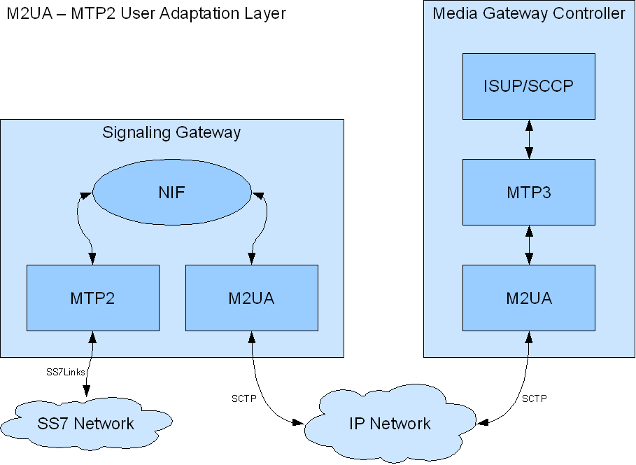M2UA
From TBwiki
(Difference between revisions)
Cboulanger (Talk | contribs) (Created page with 'The M2UA (Message Transfer Part 2 User Adaptation Layer) is use to interface MTP2 of the SG to the MTP3 of a MGC. M2UA can also be seen as way to extend a MTP2 link. An M2UA link…') |
Cboulanger (Talk | contribs) |
||
| Line 1: | Line 1: | ||
| − | The M2UA (Message Transfer Part 2 User Adaptation Layer) is use to interface MTP2 of the SG to the MTP3 of a MGC. M2UA can also be seen as way to extend a MTP2 link. An M2UA link is always bind to an MTP2 link. | + | The M2UA (Message Transfer Part 2 User Adaptation Layer) is use to interface MTP2 of the SG to the MTP3 of a MGC. M2UA can also be seen as way to extend a MTP2 link. An M2UA link is always bind to an MTP2 link. |
| + | |||
Here is a diagram of a setup using M2UA: | Here is a diagram of a setup using M2UA: | ||
| + | [[File:m2ua_setup2.png|m2ua_setup2.png]] | ||
Revision as of 10:33, 22 October 2009
The M2UA (Message Transfer Part 2 User Adaptation Layer) is use to interface MTP2 of the SG to the MTP3 of a MGC. M2UA can also be seen as way to extend a MTP2 link. An M2UA link is always bind to an MTP2 link.
Here is a diagram of a setup using M2UA:
As you can see the M2UA layer can be interface with either NIF or MTP3. Therefore M2UA has 2 modes of operation. Toolpack can configure M2UA in both modes.
